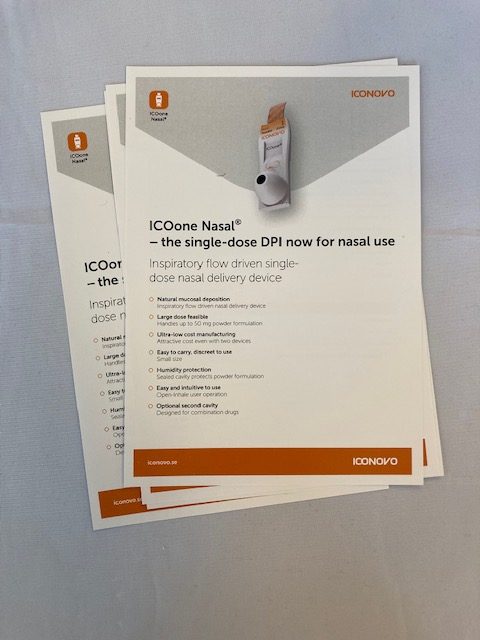Suman said that Aptar has seen increasing interest in nasal powder vaccines, which eliminate the need for cold chain storage, can deliver a higher payload, and are more stable than liquids. She discussed Aptar Pharma’s work with TFF Pharmaceuticals to develop dry powder vaccines for delivery in the Unidose (UDS) nasal powder delivery device. One challenge with the nasal powders, she noted, is with particle characterization, where traditional nasal spray characterization methods such as laser diffraction may not work. In addition, Suman mentioned the lack of regulatory guidance for nasal powders, though she said that her experience had been that regulators tend to rely on inhalation powder guidelines for such products.
Both Jenny Lam of University College London and Orest Lastow of Iconovo presented papers describing dual nose/lung delivery of powder formulations for protection against viral infection. Presenting in the “Bench to Bedside” session, Lam acknowledged that liquid (nebulized) formulations have a place for delivery of antibodies to treat disease but asserted that powders are more convenient for prophylaxis and described development of a spray dried inhaled antibody against SARS-CoV-2 with a bi-modal particle size distribution for dual targeting of the nose and lung. When asked how she would expect regulators to approach a product meant for both nasal and lung deposition, especially where there are nasal excipients such as mucoadhesives that are not approved for the lung, Lam said that her team had not thought much about that question yet.
In his talk, Lastow, like Suman, pointed out that delivery of vaccines by liquid nasal spray is highly sensitive to head and device position, which he cited as one major reason for preferring powder formulations in addition to the ease of handling and stability issues. He disputed the need for a bi-modal particle size distribution, saying that there is no need to target the nose directly because the nose does a great job as a filter. Lastow advocated targeting the formulation to the lung, advising, “Tailor the particle size and the device to hit the lung. The nose will get a sufficient amount anyway, and you get the nasal deposition for free.”
Lastow described experiments using Iconovo’s ICOone nasal device that led to a conclusion that it is possible to deliver several mg of powder to the nose and lung in a single inhalation. Regarding questions about how regulators would deal with this approach, he declared, “We should not be deterred by regulatory issues; we should go for what’s best from a scientific point of view and argue for that.”
In the Posters on the Podium session, Patricia Henriques of the University of Coimbra also discussed nasal powders, presenting her poster, “Benchmarking of Particle Engineering Strategies for Nasal Powder Delivery: Characterization of Nasal Deposition Using the Alberta Idealized Nasal Inlet,” which described techniques used in developing a nasal powder targeted specifically at the turbinates.
Following the session, Henriques was named the winner of the 2023 VCU RDD Peter R. Byron Graduate Student Award For Excellence in Research, and Understanding and Defense of Work at RDD Conferences.



